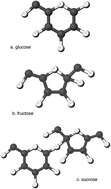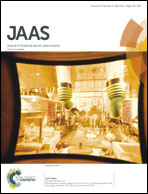The potential for a carbon stable isotope biomarker of dietary sugar intake
Abstract
Added sugar is sweetener added to foods during processing or preparation that offers no health benefits to the consumer. The mean U.S. intake of added sugar is ≈16% of total calories; at the highest level of consumption, this value exceeds 35%. In addition, 78% of added sugar typically consumed is refined from C4 plants (e.g., corn and sugar cane) and it follows that the δ13C value of these sweeteners is conspicuously high compared to carbohydrates derived from C3 plants. We first suggested in 2006 the potential for the δ13C of human tissues to indicate corn- and cane-sugar intake for use in a clinical setting. At present, self-reported dietary assessment methods are commonly used to measure added sugar intake, but are subject to underreporting, particularly for sugar-rich foods. If a carbon isotope technique could produce a quantitative indicator of dietary sugar intake, it would be invaluable to the prevention and clinical treatment of chronic diseases associated with excess sugar consumption. Research to date has focused upon testing the correlation between diet as characterized either by bulk food δ13C value or by food composition (e.g., added sugar intake quartile) and the δ13C values of human tissues. Analysis of hair, nail and red blood cells in modern humans with known diet has revealed associations between the δ13C value of bulk diet and the δ13C value of these tissues. With respect to added sugar, the δ13C values of blood serum and fingerstick blood have both been shown to be associated with added sugar intake, even after adjustment for meat intake. Researchers have attempted to isolate specific compounds in blood that are uniquely derived from dietary carbohydrates, such as direct endogenous carbohydrate sources (blood glucose) and specific non-essential amino acids (red blood cell alanine), and have seen strong correlations with added sugar intake. Recognized dietary confounders such as meat/animal products have been addressed using statistical adjustments and a dual-isotope analytical approach that invokes δ15N as a correction factor. Further controlled feeding studies and epidemiological surveys complete with Institutional Review Board approval are needed to establish the sensitivity of δ13C tissue assay as an objective biomarker for added sugar intake.

- This article is part of the themed collection: Novel stable isotopes in health sciences

 Please wait while we load your content...
Please wait while we load your content...